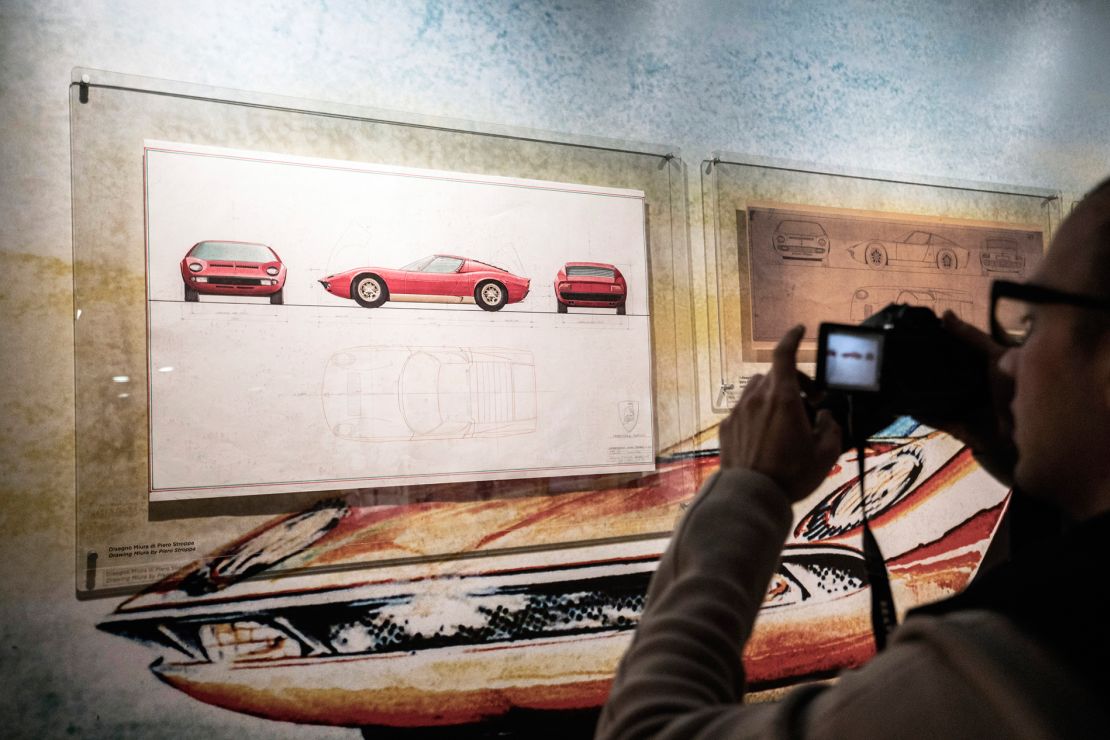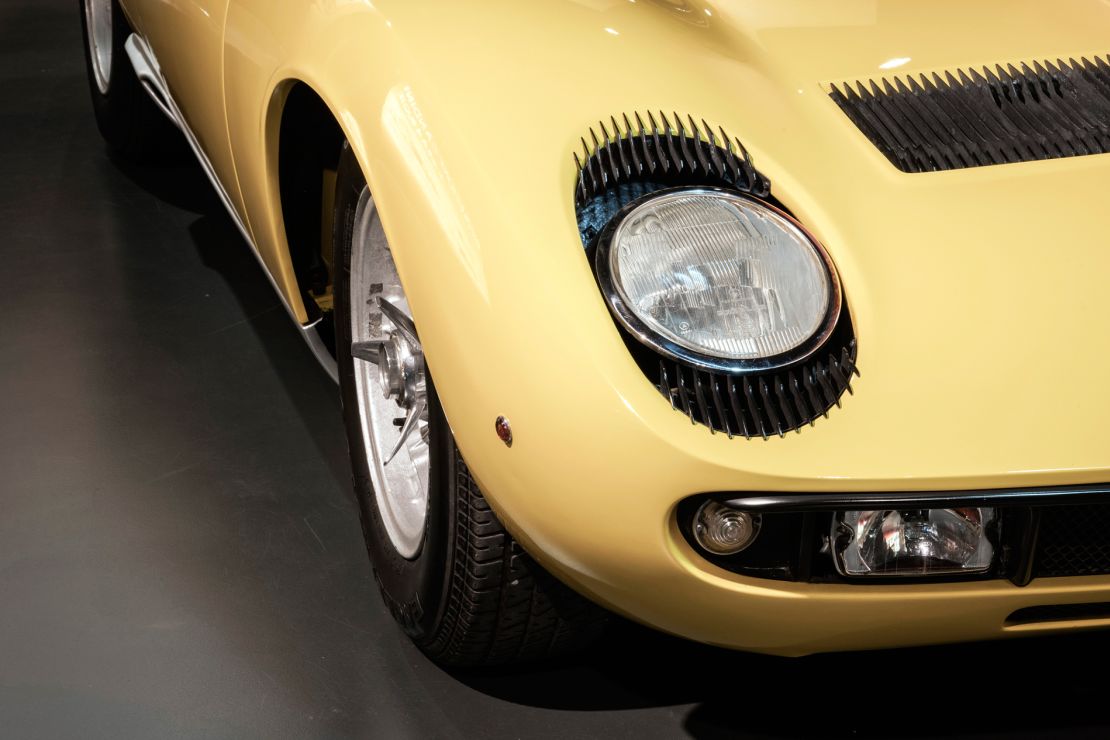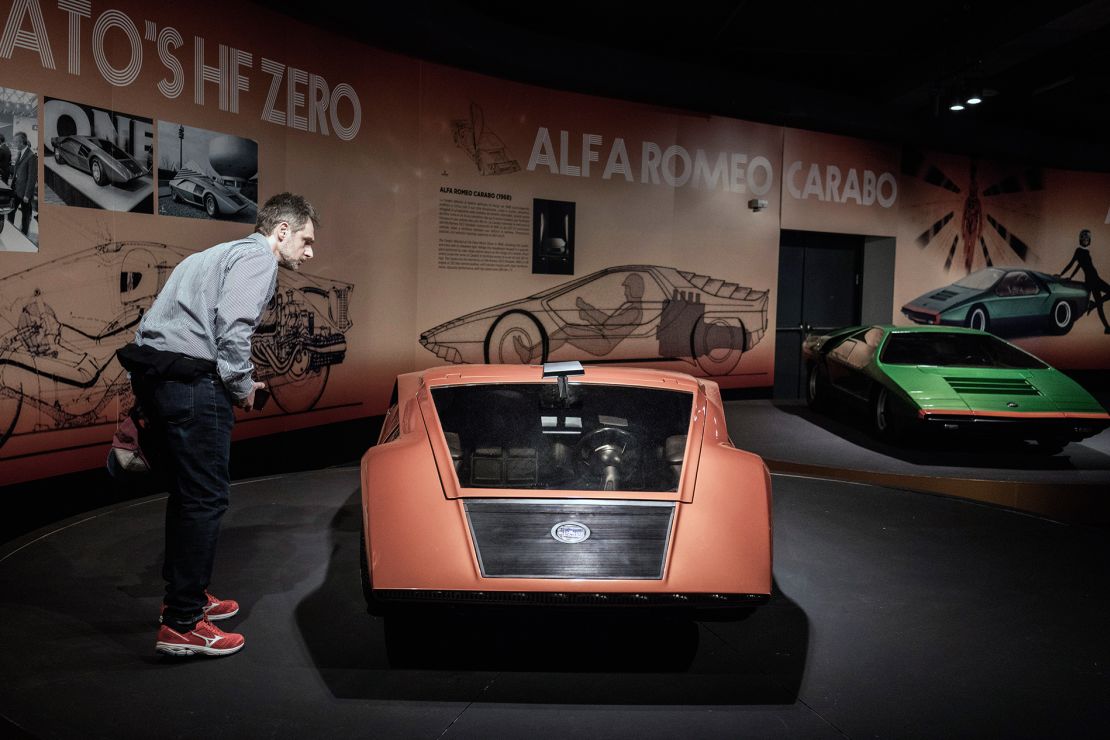At the 1971 Geneva Motor Show, visitors saw a car unlike any they had seen before.
All angles and sharp edges, it looked almost like a giant spear point carved from stone and placed on wheels. It was imposing and aggressive. Even its name, Countach, was an expression of astonishment in northern Italy’s Piedmontese dialect.
Soon, young car lovers all over the world would have posters of the Lamborghini Countach on their bedroom walls, hoping someday they might get to drive a car like that.
The Countach, then only a prototype, was created as a replacement for the Lamborghini Miura, a car with curved edges and rows of black “eyelashes” around its circular headlights. It is still considered one of the most beautiful automobiles ever made.
Both these cars, each groundbreaking but so different from one another, were designed by the same man.

If Marcello Gandini had only ever designed those two automobiles and no others he would be remembered. But he did far more. Just a part of his work now fills an exhibit at the Museo Nazionale dell’Automobile in Turin, Italy. The museum is not far from Gandini’s home. It’s also near the auto design firm he worked for, Bertone.
Besides his work for Lamborghini, Gandini designed rally racing cars, economy hatchbacks, at least one helicopter and many concept cars. They all have only one thing in common.
“I always loved things that moved,” Gandini said, speaking Italian. “Not static objects. They never attracted me.”
His interest in automobiles was, at the start, mechanical rather than aesthetic. When he was five his father bought him a Meccano set, the metal building toy known as an Erector Set in the United States.
Children could build cars, airplanes and machines with the thin metal sheets and bars held together by tiny nuts and bolts.

At 18 Gandini became a mechanic. A wealthy friend with a Fiat OSCA 1500S he liked to race asked Gandini to work on the engine. Gandini decided to alter the car’s body as well, a project that became his entrance into automotive design.
In 1965 he joined the Turin-based auto design firm Bertone. His first project, a body that went over a Porsche 911’s chassis and engine, was exhibited at the 1966 Geneva Motor Show. That car was sold at a Gooding & Co. auction in Pebble Beach, California, for $1.4 million in 2018.
The starting point for all his designs, Gandini said, was purpose. Each suited a need.
Prototypes, or concept cars, were his favorites, he said. They gave Gandini the opportunity to create entirely new automotive forms. He loved the opportunity to start from a clean sheet of paper. And, in these cases, the need was simple.

“When we are talking about a prototype,” he said, “The most important thing is to create a sensation. As much sensation as possible.”
The Countach prototype created an immense sensation. Every Lamborghini since has been influenced by it. Even the current Lamborghini Urus, a modern SUV, has design elements taken from the Countach.
Most Lamborghini competitors have also taken inspiration from it as well, at least indirectly. While the Miura is generally called the “first supercar,” due to the mechanical lay-out under its metal skin, the Countach created the enuring visual style of the modern supercar.

It was ultimate product of Gandini’s experimentation with the wedge. It started with Alfa Romeo Carabo concept of 1968. As he sat in the museum recently, Gandini insisted this shape was just “in the air” at the time. It was a general geometric theme designers were playing with.
“In this case, with the Carabo in 1968, we began to forget these shapes that were more pleasing to the eye for things that were much harder, more extreme,” he said.
Things became even more extreme with the Lancia Statos HF Zero in 1970. Looking at that car, it’s almost hard to imagine that it is, in fact, a drivable automobile. Instead of doors, the cabin is entered through the upward swinging windshield. For driving, rear visibility is afforded by a temporary rearview mirror that attaches to the nearly horizontal windshield.

The Countach melded elements of both cars. It had a wedge shape, doors that opened upwards like they did on the Carabo. Rear visibility in the first Countach production model was through a sort of periscope built into the roof of the car.
A black Countach stands at the entrance to the Museo Nazionale dell’Automobile’s Gandini exhibit. It is his masterpiece, the car of which he is clearly most proud. When asked about it, his usual modesty broke down just a bit.
“Maybe I shouldn’t say this,” he said, “but nothing better has been done since.”
“Marcello Gandini. Hidden Genius,” is on at Museo Nazionale dell’Automobile in Turin until May 26, 2019.
Top image: a Lamborghini Miura




